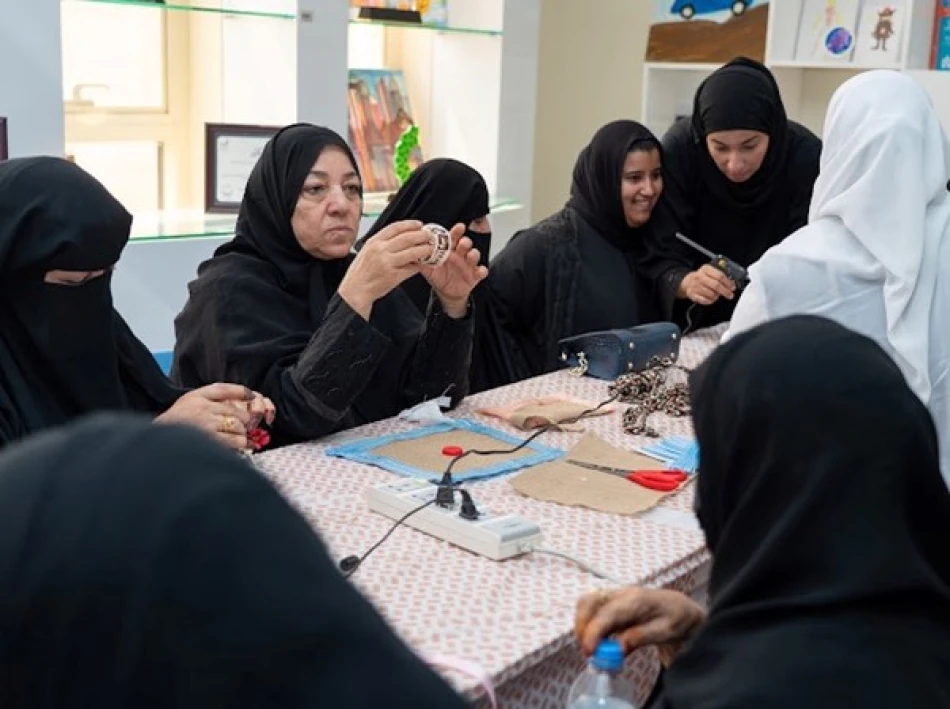
Enjoy the Joys of Summer: Ajman's 6th Annual Celebration Continues
Ajman's Summer Program Demonstrates Smart Government Strategy for Youth Engagement
The UAE emirate of Ajman is executing an ambitious month-long summer initiative that showcases how regional governments are evolving beyond traditional public services to become active community builders. The sixth edition of "Our Summer is Happiness" program, running from July 14 to August 14, has already engaged over 2,800 participants across specialized centers targeting different demographics—a model that other Gulf states are likely monitoring closely.
Multi-Sector Approach Yields Early Results
Under the patronage of Sheikh Ammar bin Humaid Al Nuaimi, Crown Prince of Ajman and Chairman of the Executive Council, the program operates through six specialized summer centers. The initiative brings together local and federal government entities alongside private sector partners, creating a hybrid model that maximizes resource efficiency while expanding reach.
During the first week alone, 128 participants engaged in eight development programs, while the scientific center attracted 38 participants to its AI robotics programming initiative. These numbers suggest strong community appetite for structured summer programming beyond traditional recreational activities.
Digital Skills Take Center Stage
The program's emphasis on digital literacy reflects the UAE's broader strategy to future-proof its workforce. The Department of Land and Real Estate Regulation launched two key initiatives: Digital Awareness Ambassadors and the Youth Content Creator Platform, targeting 14-18 year-olds. Meanwhile, Ajman X Center introduced the "Little Programmer" program focusing on AI robotics—now in its 16th iteration, indicating sustained government investment in tech education.
Gender-Specific Programming Shows Participation Gaps
The participation data reveals interesting demographic patterns. The girls' summer center attracted 766 participants across 21 programs, while the boys' center engaged 391 participants in just four programs. This disparity suggests either different programming approaches or varying engagement strategies between gender-specific centers.
The boys' center notably featured a National Service preparation program organized by the Citizens Affairs Office—reflecting the UAE's mandatory military service requirements and the government's effort to prepare youth for civic duties.
Cultural Programming Dominates Participation
The cultural programs center emerged as the largest draw, attracting 1,529 participants across 29 programs. This high engagement rate indicates strong community interest in heritage preservation and cultural activities, aligning with the UAE's broader cultural renaissance initiatives seen across emirates.
Inclusive Design Addresses All Demographics
The program's inclusive approach extends to seniors and people with disabilities, demonstrating comprehensive social programming. The senior citizens' center organized hydroponic farming, traditional heritage corners, and sand art workshops, while the center for people of determination offered adapted sports including goalball for the visually impaired and wheelchair basketball.
This multi-generational approach positions Ajman's program as more than youth engagement—it's community-wide social infrastructure development.
Regional Implications for Government Programming
Ajman's model offers insights for other regional governments grappling with youth engagement and summer programming. The integration of government departments, private sector partnerships, and measurable participation metrics creates a template that balances public service delivery with community building.
The program's focus on digital skills, cultural preservation, and inclusive participation reflects broader Gulf strategies to diversify economies while maintaining social cohesion. As other emirates and Gulf states develop their own community engagement strategies, Ajman's measured approach to summer programming provides a scalable model for government-led social initiatives.
The success metrics emerging from the first week suggest that structured, multi-sector summer programming can achieve significant community engagement when properly resourced and strategically designed.
Most Viewed News

 Layla Al Mansoori
Layla Al Mansoori






